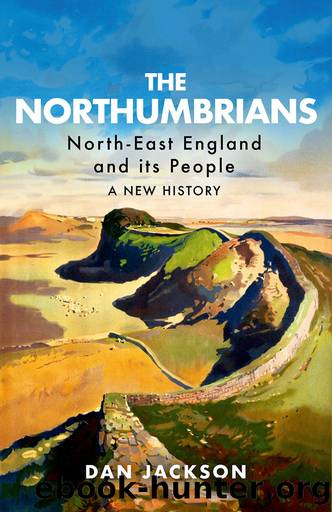The Northumbrians by Dan Jackson

Author:Dan Jackson
Language: eng
Format: epub
Publisher: Hurst
Published: 2019-07-15T00:00:00+00:00
5
HARD WORK AND HEDONISM
He seldom thinks, that sits at ease,
I’ warm an’ cheery room,
While at his feet the big coals blaze,
O’Geordy’s dreary doom
Alexander Barras, The Pitman’s Social Neet, 1897
Ah me lads, ye shud of seen us gannin’,
We pass’d the foaks upon the road just as they wor stannin’;
Thor wes lots o’ lads an’ lasses there, all wi’ smiling faces,
Gannin alang the Scotswood Road, to see the Blaydon Races.
Geordie Ridley, ‘The Blaydon Races,’ 1862
Northumbrian ‘rapper’ is the acceptable face of English folk dancing. There is no danger here of men in bells and feathers mincing around a maypole; rapper is fast, complex and vigorous, danced by men in mining gear—a long-sleeved vest, knee-length ‘pit hoggers,’ long stockings and clogs. The rappers’ ‘swords’ (basically metal strips with a handle at each end) were once used to scrape the sweat and coal dust off the backs of pit ponies, and in the dance’s intricate finale they are woven together into a five-pointed star which is then brandished in panting exultation. This style of dancing—which to see in the flesh is utterly exhilarating—is like a cross between a whirling Jewish mitzvah tantz and an Irish slip jig and melded older traditions of medieval long-sword dancing with industrial themes. When the famous compiler of English folk dance and song Cecil Sharp saw the Rappers of Winlaton go through their paces he wrote that
it would be difficult to exaggerate the force and energy with which it was executed when I saw it … the great difficulty is to catch its barbaric spirit, to reproduce the breathless speed, the sureness and economy of movement, the vigour and abandonment of the ‘stepping.’1
The earliest record of this kind of sword dancing in England dates back to the Tyne Valley in 1715 and flourished within the growing number of mining communities in Northumberland and Durham. The vigorous steps themselves seem to embody so many of those typically Northumbrian traits that those places were known for—especially an intense solidarity with the marras (workmates) you laboured with in dangerous conditions, and the lust for life that was so often made manifest above ground.
This Northumbrian dance tradition is little known, but after all it was Nan Liscombe, the daughter of a Tyneside clog dancer and publican, who taught Gene Kelly how to tap, while David Bowie and Kate Bush learned how to dance under the tutelage of Lindsay Kemp from South Shields. A preference for vigorous styles of dancing is still manifest in the North East and exemplified by the music and dance of ‘makina’ (the stress is on the second syllable). This is a form of high energy Spanish techno characterised by hard trance music, which has created ‘a genuine youth culture phenomenon in the North East in general, much like grime has been in London, or bassline in Sheffield.’2 The dance steps of makina, also known as ‘New Monkey’ after a Sunderland nightclub where it first flourished, can appear like a frantic sailor’s hornpipe accompanied by turbocharged 178 beats-per-minute synth and amusing, bawdy lyrics delivered with swaggering rapid fire eloquence.
Download
This site does not store any files on its server. We only index and link to content provided by other sites. Please contact the content providers to delete copyright contents if any and email us, we'll remove relevant links or contents immediately.
| Africa | Americas |
| Arctic & Antarctica | Asia |
| Australia & Oceania | Europe |
| Middle East | Russia |
| United States | World |
| Ancient Civilizations | Military |
| Historical Study & Educational Resources |
Elizabeth by Philippa Jones(1857)
Mary Boleyn by Alison Weir(1461)
Traitors of the Tower by Alison Weir(1354)
A Journal of the Plague Year (Oxford World's Classics) by Daniel Defoe(1223)
Eleanor of Aquitaine by Marion Meade(1079)
Moon Tiger by Penelope Lively(1064)
A Short History of England by Simon Jenkins(1058)
The Real Middle Earth by Brian Bates(1048)
Life of Pi by Yann Martel(1027)
London Under by Peter Ackroyd(1012)
Notes From a Small Island by Bill Bryson(1002)
Queen Isabella by Alison Weir(1002)
American Idol by Richard Rushfield(919)
Her Majesty's Spymaster by Stephen Budiansky(901)
Tudors Versus Stewarts by Linda Porter(900)
Albion by Peter Ackroyd(833)
The Creation of Anne Boleyn by Susan Bordo(809)
Cromwell, Our Chief Of Men by Fraser Antonia(809)
Children Of England: The Heirs of King Henry VIII 1547-1558 by Weir Alison(808)
